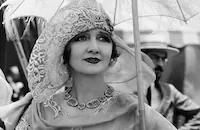Half Marriage

Brief Synopsis
Cast & Crew
William J. Cowen
Olive Borden
Morgan Farley
Ken Murray
Ann Greenway
Anderson Lawler
Film Details
Technical Specs

Synopsis
Following a party at Judy Page's Greenwich Village apartment, she elopes with Dick Carroll, a young architect employed by her father. Later, Judy's mother arrives, insisting that she return to the Page country estate, while Dick hides in the apartment. He visits Judy while her parents are away and quarrels with Tom Stribbling, who monopolizes Judy's attentions at a country club dance. They make an appointment to meet at Judy's apartment, but Tom learns of their plan, sends a telegram to Dick canceling the meeting, and meets the girl himself. Tom attempts to force his attention on her; and, in a struggle outside her window, he falls to his death just as Dick enters the apartment. Dick assumes blame for Tom's death, but investigation reveals that Judy is justified; their secret marriage is revealed, and Judy's parents, after admonishment, give their blessing to the couple.

Director
William J. Cowen
Cast

Olive Borden
Morgan Farley

Ken Murray
Ann Greenway
Anderson Lawler
Sally Blane

Hedda Hopper
Richard Tucker
James Bradbury Jr.
Jack Trent
James Eagle
G. Pat Collins
Gus Arnheim And His Cocoanut Grove Ambassadors
Crew

Film Details
Technical Specs

Articles
Half-Marriage -
By Violet LeVoit














